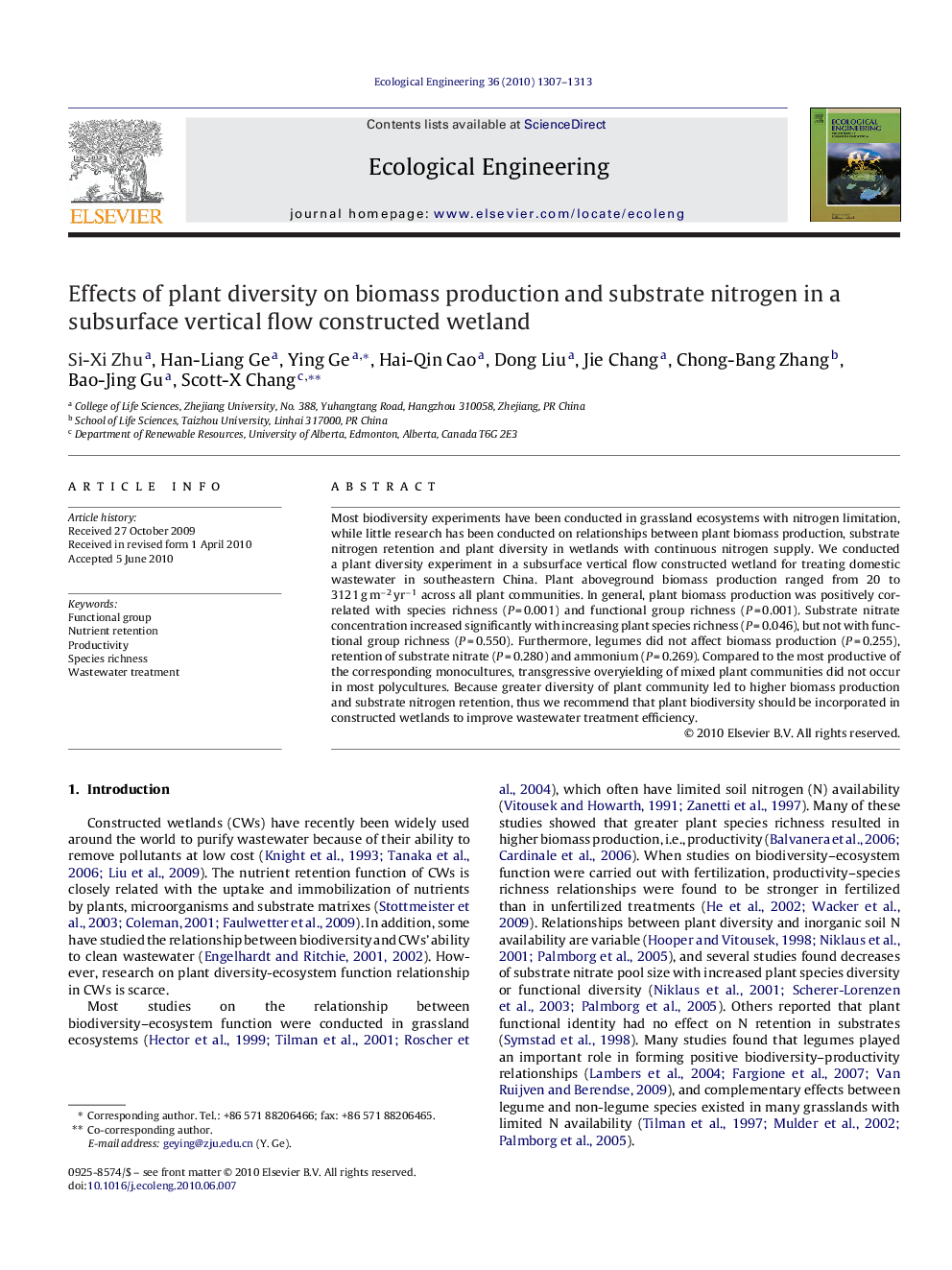| Article ID | Journal | Published Year | Pages | File Type |
|---|---|---|---|---|
| 4390578 | Ecological Engineering | 2010 | 7 Pages |
Most biodiversity experiments have been conducted in grassland ecosystems with nitrogen limitation, while little research has been conducted on relationships between plant biomass production, substrate nitrogen retention and plant diversity in wetlands with continuous nitrogen supply. We conducted a plant diversity experiment in a subsurface vertical flow constructed wetland for treating domestic wastewater in southeastern China. Plant aboveground biomass production ranged from 20 to 3121 g m−2 yr−1 across all plant communities. In general, plant biomass production was positively correlated with species richness (P = 0.001) and functional group richness (P = 0.001). Substrate nitrate concentration increased significantly with increasing plant species richness (P = 0.046), but not with functional group richness (P = 0.550). Furthermore, legumes did not affect biomass production (P = 0.255), retention of substrate nitrate (P = 0.280) and ammonium (P = 0.269). Compared to the most productive of the corresponding monocultures, transgressive overyielding of mixed plant communities did not occur in most polycultures. Because greater diversity of plant community led to higher biomass production and substrate nitrogen retention, thus we recommend that plant biodiversity should be incorporated in constructed wetlands to improve wastewater treatment efficiency.
